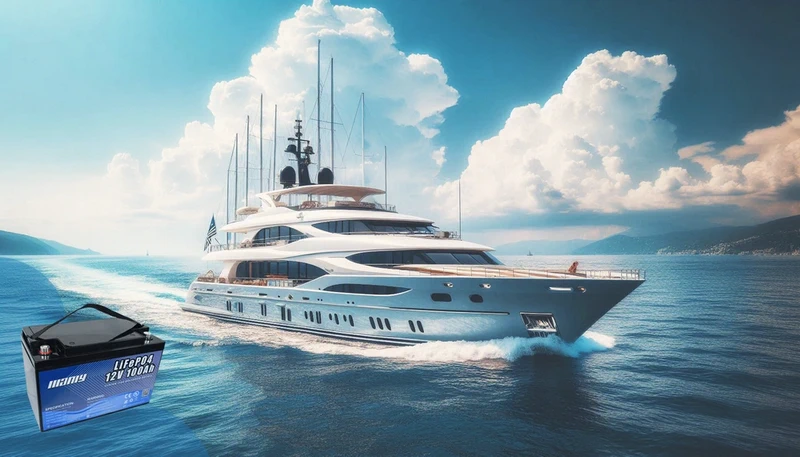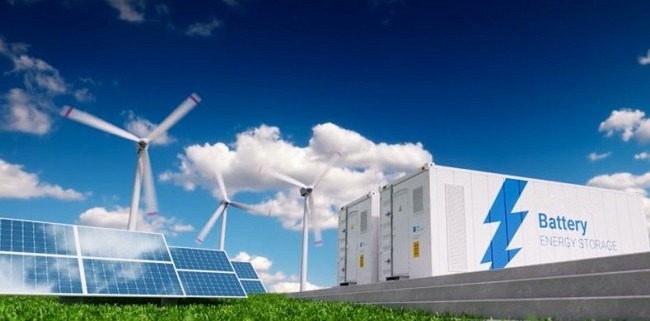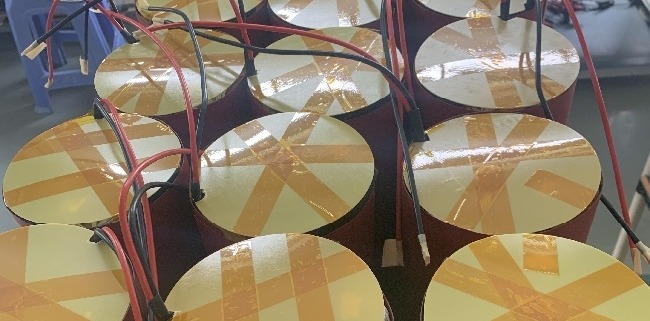Charge a Marine Battery: Step-by-Step Guide
Table of Contents
- Charge a Marine Battery: Step-by-Step Guide
- Understanding Marine Batteries
- Preparing to Charge Your Marine Battery
- Step-by-Step Guide: How to charge a marine battery
- Best Practices for Marine Battery Maintenance
- Conclusion
- FAQ
- Hot Resarch
- Meridian Energy plans to deploy 100MW battery energy storage project in New Zealand
- Australia customer 600pcs 25.6V 28.8Ah Lithium iron phosphate battery for Solar system ,ready to test.
- Lithium battery raw materials continue to rise, how long will the tight supply of raw materials last?
Marine batteries are the lifeblood of any boat—they power your engine, lights, gauges, and all the essential onboard electronics. Without a healthy battery, your boat is a pretty shell on the water. In this article, we dive into the burning question: how do I charge a marine battery? We’ll explore everything from the ins and outs of battery types to a step-by-step guide on charging. Plus, we’ll compare the advantages of a marine li ion battery with those of traditional marine deep cycle batteries. Let’s get started on this exciting journey to keep your boat powered and your adventures safe!
Understanding Marine Batteries
1. Types of Marine Batteries
Not all marine batteries are created equal. When it comes to powering your boat, you typically have three choices:
- Starting Batteries: These provide that quick, powerful burst of energy to get your engine running, but they’re not built for long-term power.
- Deep Cycle Batteries: Designed for sustained power delivery, these batteries keep your lights, electronics, and other accessories humming for hours.
- Dual-Purpose Batteries: These offer a blend of starting and deep cycle capabilities, which can be handy on smaller vessels with limited space.
Most boaters prefer marine deep-cycle batteries for extended use and reliability. These batteries handle deep discharges better, ensuring their boats stay powered even during extended trips.
2. Battery Chemistry and Technology
Battery chemistry plays a pivotal role in performance and longevity. Traditional chemistries—like lead-acid, AGM, and gel—have long been the go-to options. However, a modern contender is changing the game: the marine li ion battery.
Why choose a marine li ion battery? Because it’s lightweight, lasts significantly longer, and requires minimal maintenance compared to conventional batteries. Think of it as upgrading from an old clunker to an award-winning sports car in the world of batteries. This cutting-edge technology improves performance and enhances safety and efficiency, making it a popular choice among serious boaters.
Learn more about lithium-ion battery technology on Wikipedia.
Preparing to Charge Your Marine Battery
Before you begin the charging process, a little preparation goes a long way toward ensuring safety and efficiency.
1. Assessing Your Battery’s Condition and Type
First, give your battery a thorough once-over. Check its age, inspect for any signs of corrosion, and verify the battery type. Understanding whether you’re dealing with a marine li ion battery or deep cycle batteries is crucial—it influences which charger to use and how you’ll maintain it. A well-maintained battery lasts longer and performs better when you charge a marine battery.
2. Choosing the Right Charger
Next up is selecting the correct charger. You generally have two main options:
- Onboard Chargers: Permanently installed on your boat, these chargers make it super convenient to power up as long as you have access to a standard outlet.
- Portable Chargers: These allow you to charge your battery wherever you are, which is ideal for smaller boats or when space is at a premium.
Make sure the charger you choose matches your battery’s chemistry and voltage. This step is especially important for those opting for a marine li ion battery or deep cycle batteries—using the wrong charger can lead to underperformance or even damage.
3. Safety Precautions Before Charging
Safety should always be your top priority. Here are some key precautions:
- Work in a Safe Environment: Charge your battery in a well-ventilated area and ensure the temperature is within the manufacturer’s recommended range.
- Clean Battery Terminals: Dirty or corroded terminals can interfere with the charging process, so give them a good clean before you connect anything.
- Gear Up: Wear protective gear such as gloves and eye protection to prevent mishaps.
- Follow Manufacturer Guidelines: Always adhere to the specific recommendations provided by your battery and charger manufacturers.
By taking these simple steps, you will ensure your safety and optimize the performance and lifespan of your battery.
Step-by-Step Guide: How to charge a marine battery
Let’s get into the nitty-gritty of charging your boat’s power source. Follow these steps, and you’ll power up like a pro in no time!
1. Cleaning and Inspecting Battery Terminals
Before you plug anything in, clean your battery terminals. Dirty or corroded terminals can prevent your charger from doing its job, and no one wants a slow charge on a hot day!
- Tip: Mix some baking soda with water, scrub gently with a soft brush, and wipe dry.
- Why It Matters: Clean connections ensure that every bit of energy flows efficiently when you charge a marine battery.
2. Connecting the Charger
Now, let’s hook everything up:
- Positive (Red) Cable: Firmly attach this to the positive terminal.
- Negative (Black) Cable: Connect it securely to the negative terminal.
Double-check your connections, whether using a smart charger that adjusts the current automatically or a trusty manual charger. This step is vital, especially when working with a marine li ion battery or marine deep cycle batteries. Once the cables are locked in, plug in your charger and power it up. Easy as pie, right?
3. Monitoring the Charging Process
Keep an eye on your battery as it charges—this is where modern tech shines:
- LED Indicators: These give you a quick look at the charge level.
- Smart Apps & Timers: Many chargers have apps or built-in timers to let you know when you’re full.
By actively monitoring, you prevent overcharging and ensure your battery gets the right amount of juice.
4. Disconnecting the Charger Safely
When your battery is fully charged, it’s time to disconnect—but do it safely:
- Unplug the Charger: Always start by unplugging the charger from the wall.
- Remove the Negative Cable: Disconnect the black cable first.
- Disconnect the Positive Cable: Finally, remove the red cable.
Following this order helps prevent accidental short-circuits and keeps your battery in shape.
Best Practices for Marine Battery Maintenance
Regular maintenance keeps your battery performing like a champ. Here’s how to keep those power levels up!
1. Maintenance Tips for Prolonging Battery Life
- Routine Inspections: Check for any signs of corrosion or wear on the terminals.
- Clean Regularly: A little cleaning goes a long way in ensuring your connections are solid.
- Water Topping: Top up with distilled water when needed for lead-acid batteries.
By following these habits, you’ll always be ready to charge a marine battery and hit the water confidently.
2. Optimizing Charging Cycles
Different batteries have different needs:
- For a marine li ion battery: Enjoy the benefits of minimal maintenance and the ability to handle deeper discharges.
- For marine deep cycle batteries: Stick to regular, shallow discharges to keep them healthy over the long haul.
Tailoring your charging cycle to the specific battery type maximizes performance and extends lifespan.
3. Troubleshooting Common Issues
Even the best-maintained batteries can run into issues. Watch out for:
- Overcharging: This can overheat your battery and cause damage.
- Undercharging: Leaves your battery underpowered.
- Terminal Corrosion: Hinders efficient energy transfer.
If you notice any problems, check your charger settings and ensure you use the right equipment for your battery type.
Conclusion
1. Recap of Key Points
We’ve broken down how to charge a marine battery step by step—from cleaning and connecting to monitoring and safe disconnection. Each stage is crucial for keeping your boat’s power system in peak condition.
2. Final Tips for Maintaining Both Marine li ion battery and marine deep cycle batteries
Whether you opt for the cutting-edge marine li ion battery or the reliable marine deep cycle batteries, proper care and regular maintenance are your best friends. Tailor your charging habits to your battery’s specific needs, and you’ll enjoy award-winning performance on every trip.
3. Encouragement to Follow Best Practices for Reliability on the Water
Stick to these best practices, and you’ll be cruising with confidence. Keeping your battery in prime condition means fewer hassles and more time enjoying your time on the water. Let’s keep those adventures rolling, shall we?
For more detailed battery care tips and industry insights, check out reputable sources like the U.S. Department of Energy or Wikipedia’s battery technology page. Happy boating!
FAQ
1. Can you charge a marine battery with a regular charger?
While you technically can, it’s not recommended. Marine batteries require a charger that matches their specific chemistry and voltage. A regular charger may not provide the proper charging profile, leading to undercharging, overcharging, or even damage over time.
2. What is the best way to charge a boat battery?
The best way is to use a charger specifically designed for your battery type. Follow a step-by-step process: clean and inspect the terminals, connect the positive and negative cables correctly, monitor the charging process using bright indicators, and disconnect safely when fully charged. This ensures efficiency and longevity.
3.What kind of charger do I need for a marine battery?
You need a charger that is tailored to your battery’s chemistry—whether it’s a marine li ion battery or marine deep cycle batteries. Look for chargers with the correct voltage, charging algorithm, and safety features like automatic shut-off and intelligent monitoring for optimal performance.
Hot Resarch
Marine Battery Battery Manufacturer Lithium Battery
Hello
According to reports, New Zealand energy developer Meridian Energy recently announced plans to install New Zealand’s first grid-scale battery energy storage system near a refinery in northern Auckland. As part of the hybrid deployment of renewable energy projects, it aims to stabilize grid operations and strengthen the electrical connection between New Zealand’s north and south islands.
The company said it plans to deploy a battery energy storage system with an installed capacity of more than 100MW in a grid-scale solar farm. The company has purchased 105 square meters of land near the Marsden Point refinery to build the Ruakaka Energy Park.
Neil Barclay, CEO of Meridian Energy, said that the Marsden Point battery energy storage system is expected to be put into operation in mid-2023. In late August this year, the company’s 34,000 customers experienced power outages on the coldest night of the year.
Rebecca Knott, head of renewable energy development at Meridian Energy, said in a statement last week, “New Zealand is moving to a fully renewable power system, which means that electricity will be provided by intermittent renewable energy sources such as wind and solar. In the case of insufficient wind or during peak power demand, we need energy that can be quickly dispatched. Battery energy storage systems can meet this challenge by providing power in a short period of time.”
The battery energy storage system will be deployed in the southern part of New Zealand’s North Island, aiming to reduce the possibility of future power network interruption and to allow New Zealand’s South Island to provide more power to the North Island.
Meridian Energy expects that the company will deploy four to five battery energy storage systems by 2030.
Knott said, “The Marsden Point battery energy storage system is the first of a number of battery energy storage projects we plan to deploy. North Island. We are currently discussing our site issues with local community stakeholders and conducting ecological and geotechnical site assessments.”
Knott said that after the battery energy storage system is up and running, a solar farm will be built to provide enough electricity for 15,000 households.
Australia customer 600pcs 25.6V 28.8Ah Lithium iron phosphate battery for Solar system ,ready to test.
This batch of batteries is a combination of 72-shell 26650 lithium iron phosphate batteries 8S9P.
On the left side of the lithium iron phosphate battery is a positive electrode made of LiFePO4 material with an olivine structure, which is connected to the positive electrode of the battery by aluminum foil. On the right is the negative electrode of the battery composed of carbon (graphite), which is connected to the negative electrode of the battery by copper foil. In the middle is a separator, which separates the positive electrode from the negative electrode. Lithium ions can pass through the separator but electrons cannot pass through the separator. The battery is filled with electrolyte, and the battery is hermetically sealed by a metal casing.
Lithium iron phosphate battery has the following characteristics:
1. Super long life
The lithium iron phosphate battery can reach 2000 cycles and above under standard charging and discharging. The service life can reach 7-10 years
2. Safe to use
Lithium iron phosphate completely solves the safety hazards of lithium cobalt oxide and lithium manganate. Lithium cobalt oxide and manganese acid
Lithium will explode in a strong collision and pose a threat to consumers’ lives, while lithium iron phosphate has undergone strict safety tests and will not explode even in the worst traffic accidents, making it the safest lithium battery. .
3. High temperature resistance
The peak value of lithium iron phosphate electric heating can reach 350 ℃-500 ℃, while lithium manganese oxide and lithium cobalt oxide are only around 200 ℃.
4. Green and environmental protection
The raw material of lithium iron phosphate battery does not have any pollution and harmful substances, and it is recognized as a green and environmentally friendly battery.
If you have any 25.6V 28.8Ah Lithium iron phosphate battery for Solar system projects , please don’t hesitate to call MANLY here or email at info@batterytest.sitecoming.site.
Due to strong market demand for new energy vehicles and energy storage, the price of lithium battery materials continues to rise. As of the beginning of December, battery-grade lithium carbonate was quoted at RMB 209.99 per ton, an increase of 7.7% from the previous month. Four months ago, the price of lithium carbonate was less than 95,000 yuan/ton.
Year-to-date, the increase in lithium carbonate has exceeded 230%. The domestic average price of phosphoric acid, which is necessary for the production of lithium iron phosphate batteries, was RMB 10,500/ton on December 3, an increase of 109.3% compared with the same period last year. The prices of rare precious metals such as nickel, cobalt, and manganese have also continued to rise.
Since entering December, the third wave of price increases for lithium has started. The price of lithium carbonate will take the lead. It is expected that the price of battery-grade lithium carbonate may reach 250,000 yuan/ton before the Spring Festival.
With tight supply and demand and scarcity of high-quality resources, global competition for lithium resources has become fierce. Companies related to the industry chain have started a journey of “grabbing mines”. Lithium battery manufacturers in the middle of the industry chain have to face the pressure of rising costs.
According to Barrenjoey’s November 2021 forecast, the supply of lithium resources will continue to be tight in the next ten years, and the supply gap will continue to expand. By 2030, the gap between supply and demand will reach 1.2 million tons of LCE. The short supply situation will lead to an overall increase in the price of battery lithium materials.






